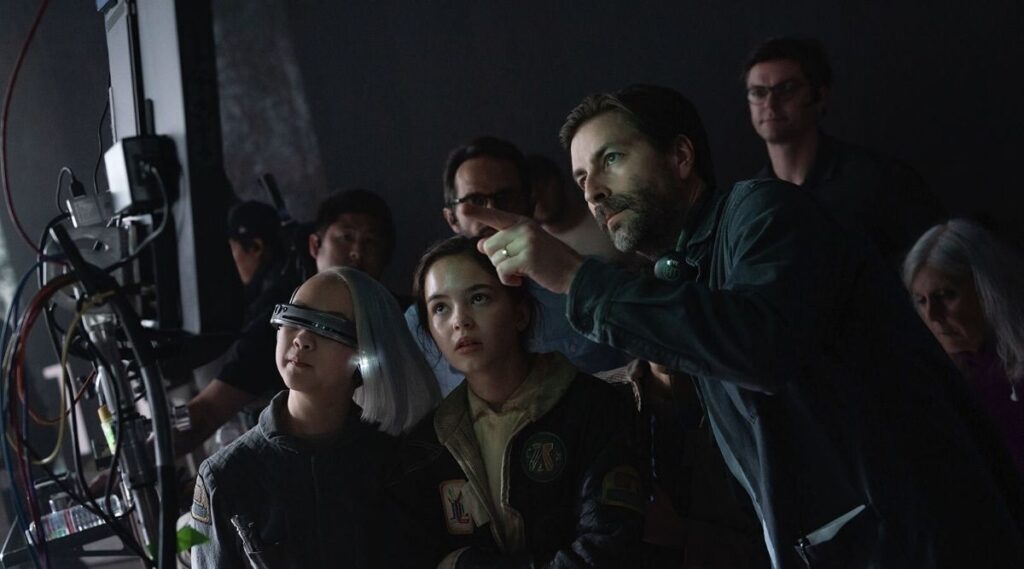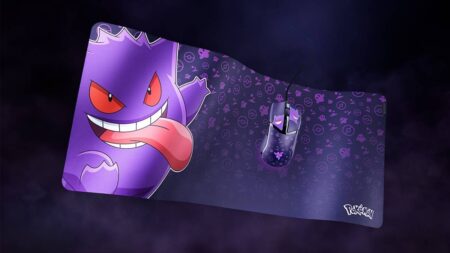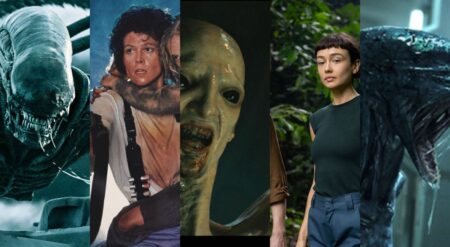Star Wars: Skeleton Crew isn’t just another chapter in the galaxy far, far away—it’s a bold exploration of what Star Wars can be when handed to a diverse group of visionary directors. With a focus on survival, resilience, and the uncharted corners of the galaxy, the series transcends the traditional boundaries of the franchise. Its strength lies not only in its heartfelt characters and layered storytelling but also in the directors who each left an indelible mark on the series.
The Skeleton Crew directors brought their distinct styles, crafting episodes that feel both uniquely personal and connected to Star Wars’ larger mythos. Their collective vision reaffirms that this beloved universe thrives when fresh voices challenge its norms. They take us deeper into the heart of the galaxy while pushing its stories in new and exciting directions.
Jon Watts: Architect of Adventure
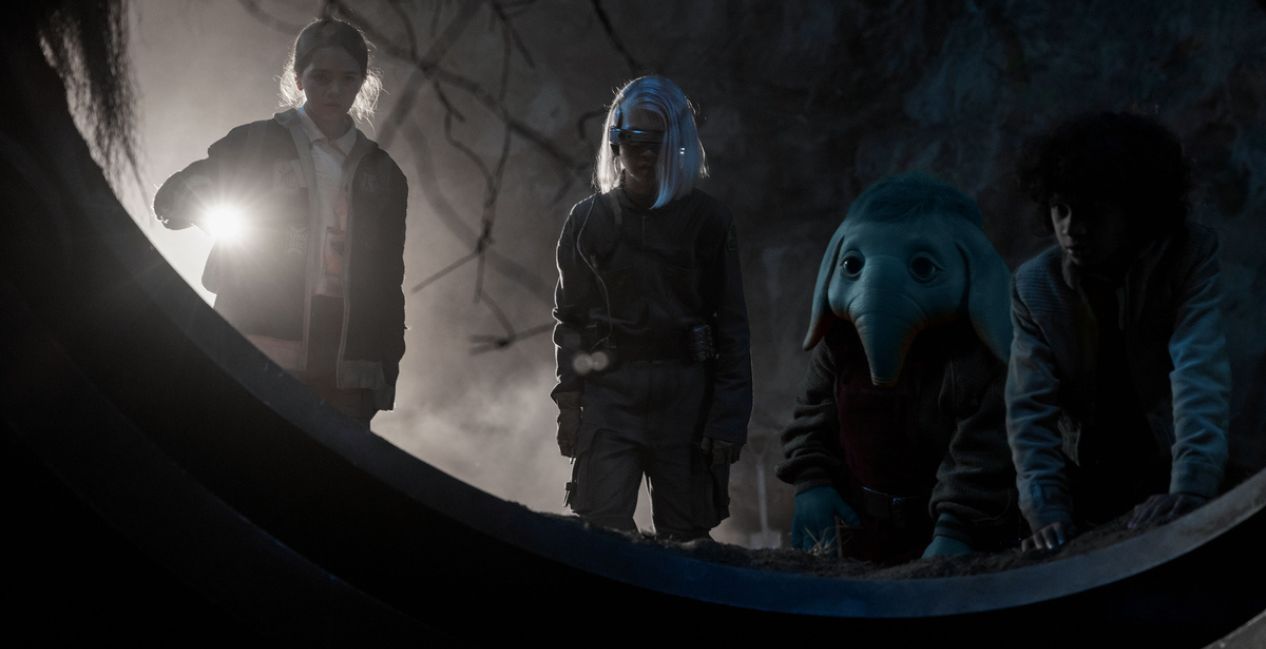
Episode 1: “This Could Be a Real Adventure”
Episode 8: “The Real Good Guys”
As co-creator of Skeleton Crew, Jon Watts set the tone for the series in the premiere and brought it to a thrilling conclusion in the finale. Best known for his work on the MCU’s Spider-Man trilogy, Watts brings a knack for blending humor, heart, and action—a combination that allowed him to craft a Star Wars story that feels both intimate and epic.
Episode 1 opens with echoes of A New Hope, introducing a world where danger comes not from the Empire but from brutal pirates. Watts balances nostalgia with freshness, using At Attin’s mysterious isolationist policies and hints of High Republic connections to weave a tale of intrigue and adventure. The practical effects and rich world-building breathe life into the galaxy, while the kids’ dynamics form the emotional core.
In the finale, Watts escalates the stakes with the Mint at At Attin—a treasure trove of Old Republic credits guarded by droids steeped in history. The kids face their biggest challenge yet, and Watts ensures their growth shines. Each child steps into their own, with Neel’s confidence, Fern’s leadership, KB’s intellect, and Wim’s emotional journey converging in a climactic battle against Jod and the invading pirates. Watts’ ability to blend high-stakes action with deeply personal storytelling cements his episodes as pivotal moments in the series.
Looking for more from Watts? You’re in luck. He’s producing Final Destination 6: Bloodlines, adding another notch to his impressive storytelling career.
David Lowery: The Mythic Visionary
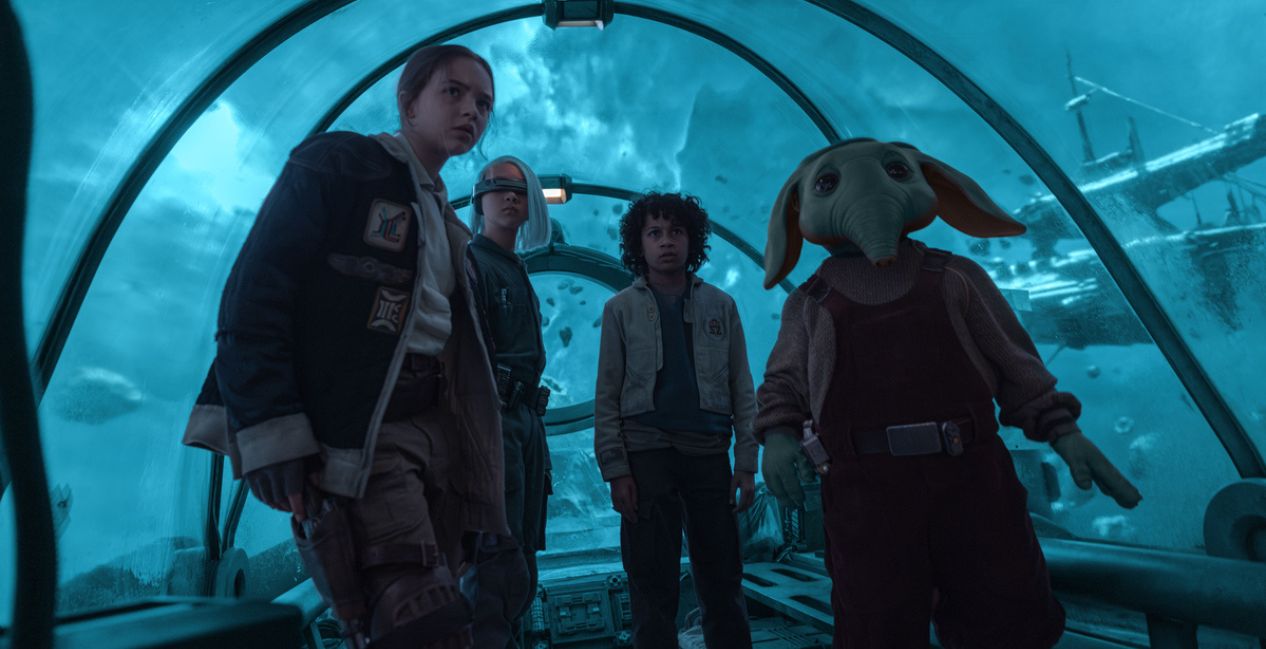
Episode 2: “Way, Way Out Past the Barrier”
Episode 3: “Very Interesting, As an Astrogation Problem”
Known for The Green Knight and A Ghost Story, David Lowery brings a haunting, mythic quality to his episodes. In Episode 2, Lowery leans into the eerie beauty of the pirate hub Borgo, capturing its chaotic danger while subtly exploring droid autonomy through SM-33. The kids’ chemistry takes center stage here, grounding the fantastical setting with relatable emotions.
Episode 3 elevates the series by blending grounded realism with the mysticism of Star Wars. The maritime-inspired dock sequence, where a snapped line threatens disaster, is a standout—a moment that feels both tactile and otherworldly. Lowery also introduces darker elements, like the skinned Togruta trophy, which juxtapose the innocence of the kids with the galaxy’s harsh realities. His direction anchors Skeleton Crew in the rich tradition of Star Wars mythos while carving out its own identity.
Lowery’s next project, Mother Mary, starring Anne Hathaway and Michaela Coel, promises another visually rich and thought-provoking tale.
The Daniels (Daniel Kwan and Daniel Scheinert): Inventive Chaos

Episode 4: “Can’t Say I Remember No At Attin”
Fresh off their Oscar win for Everything Everywhere All at Once, the Daniels bring their signature blend of humor, heart, and chaos to Episode 4. The kids return to a planet they believe to be At Attin, only to find it fractured by war and divided into factions like the Troik and Hatton. Daniels’ visual inventiveness shines in the eerie ruins and abandoned suburban relics that populate the landscape.
The emotional crux lies in Neel’s encounter with Hayna, a young warrior shaped by survival rather than privilege. Their clash of perspectives—Neel’s optimism versus Hayna’s harsh reality—highlights the nuanced storytelling Daniels excel at. The episode explores themes of privilege and moral ambiguity, reflecting the complexities of Star Wars’ galaxy in ways both poignant and thought-provoking.
The Daniels are set to direct an untitled movie set to release in 2026 with Universal. While there isn’t any details on the project, fans expect the unexpected and to come away thinking.
Jake Schreier: Grounding the Adventure

Episode 5: “You Have a Lot to Learn About Pirates”
Jake Schreier (Beef, Paper Towns) directs one of the series’ standout episodes, blending high-stakes adventure with introspective character work. Episode 5 introduces the Mint, a treasure trove tied to the Republic’s economic and political history. Schreier’s direction balances the episode’s thrilling traps and puzzles with quieter moments that delve into the kids’ growth.
Jod’s ethos of freedom at all costs contrasts with Wim’s yearning for connection, creating tension that resonates throughout the episode. Schreier’s ability to ground the spectacle in emotional stakes ensures the audience remains invested in the kids’ journey even as the galaxy’s mysteries deepen.
Schreier is directing Marvel’s highly anticipated Thunderbolts, bringing his talent for balancing intimate character work with blockbuster action to the MCU.
Bryce Dallas Howard: Emotional Gravitas
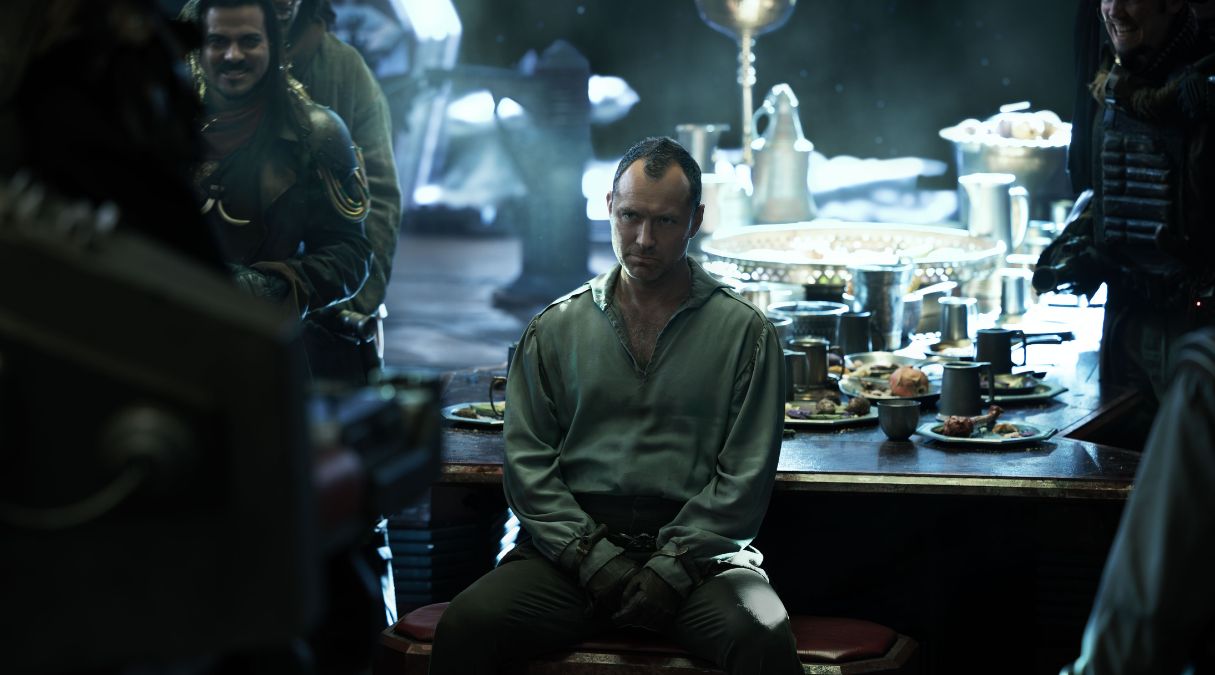
Episode 6: “Zero Friends Again”
Bryce Dallas Howard (The Mandalorian, The Book of Boba Fett) brings her expertise to Episode 6, crafting a story that highlights the kids’ resilience and camaraderie. The group’s split into pairs allows for intimate character development, with Fern learning to adapt her strength to support Neel and Wim earning KB’s trust through instinctive care.
Howard also humanizes the pirates, particularly through Kona, a clone-inspired character whose armor hints at a deeper backstory. Her nuanced portrayal of both heroes and villains elevates the narrative in a way only Howard can, emphasizing that even in a galaxy defined by conflict, everyone has a story.
While we would all love to see Howard directing her own feature-length Star Wars film, fans will have to wait until after her potential directorial commitment to the Flight of the Navigator remake and upcoming role in Deep Cover.
Lee Isaac Chung: Family-Centric Storytelling
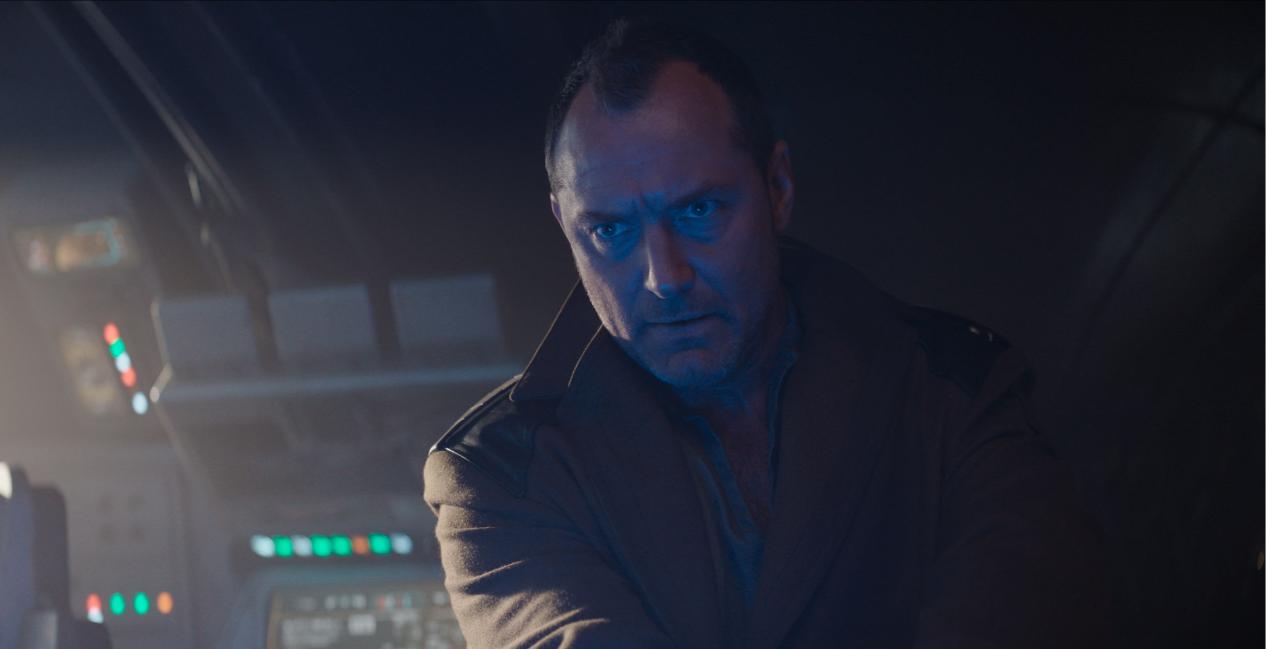
Episode 7: “We’re Gonna Be In So Much Trouble”
Lee Isaac Chung (Minari) focuses on the series’ intergenerational dynamics, drawing parallels between the kids and their parents. In Episode 7, the parents’ journey to contact their children mirrors the kids’ resourcefulness and determination. KB’s parents’ tech-savvy problem-solving highlights how family traits shape survival.
Chung’s direction explores the galaxy’s messy, morally complex nature through Jod’s actions. His resentment and greed make him a compelling foil for the kids, who embody growth and hope. The Mint’s symbolism—a relic of the Republic’s flawed ambition—adds depth to the episode, reinforcing Skeleton Crew’s central themes of survival and trust.
If you are looking for intimate stories where Chung’s seasoned directorial shines, be sure to check out his other works, such as Munyurangabo and Lucky Life.
The Skeleton Crew directors proved that Star Wars storytelling is at its best when it’s unafraid to evolve. Each filmmaker’s distinct approach—from Jon Watts’ thrilling adventure arcs to Bryce Dallas Howard’s emotional depth and the Daniels’ innovative chaos—added a new layer to the galaxy we thought we knew. Together, they’ve shown that Star Wars is more than its iconic battles or legendary Jedi; it’s a universe of endless possibilities shaped by the people behind the lens.
As these Skeleton Crew directors move on to their next projects, their contributions to Skeleton Crew serve as a blueprint for what Star Wars can achieve with creative collaboration. They didn’t just direct episodes; they redefined how the galaxy far, far away can tell its stories—ensuring that its magic resonates with longtime fans and new audiences alike.

